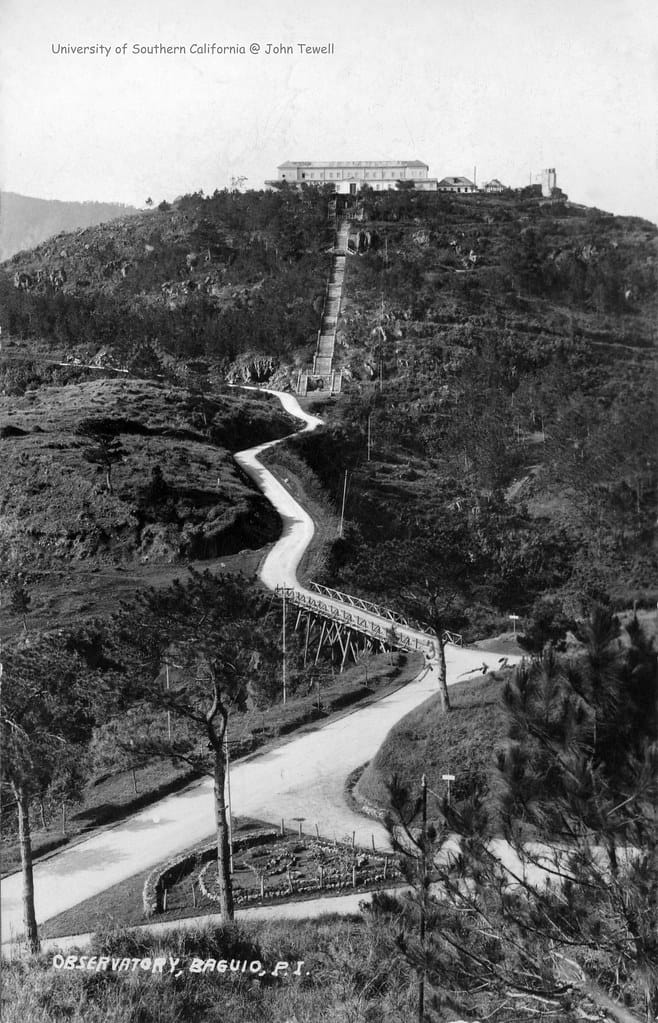The Mirador Observatory was once a beacon of grandeur and serenity nestled in the hills of northern Luzon, Philippines. But as fate would have it, the beautiful building got destroyed during the Second World War.
Thanks to a 1928 photograph shared by John Tewell on his Flickr page, we can take a step back in time and admire the observatory in all its glory. This photo shows an old building and its peaceful surroundings.

The history of the Mirador Observatory dates back to 1876, when Manuel Scheidnagel, political-military governor of Benguet, described the hills of Baguio in a pamphlet and mentioned El Mirador, “to which I applied the name because of its shape and peculiar position in the hills of Baguio”. From the Mirador, one could see the South China Sea, Lingayen Gulf and the Ilocos Coast.
In 1890, Fr. Miguel Roses, rector of the Ateneo de Manila, proposed the purchase of a house 1500 metres above sea level in the province of Benguet to serve as a sanatorium for sick Jesuits. And in 1906, the Jesuits bought the land at public auction for 1,092.94 pesos for 327,881 square metres, under the jurisdiction of the American Philippine Commission.
1913 saw the beginning of the construction of the Sanctuary of Our Lady of Lourdes. Five years later, the 212-step staircase that still exists today was built.

1928 Mirador Observatory
Through historical records and photographs, the memory of the old Mirador Observatory lives on. A digitally enhanced version of the photograph is shown here for better appreciation.
Copyright: Catholic Foreign Mission Society of America, Maryknoll, New York.
Photo Enhancement: Djay Bustamante







